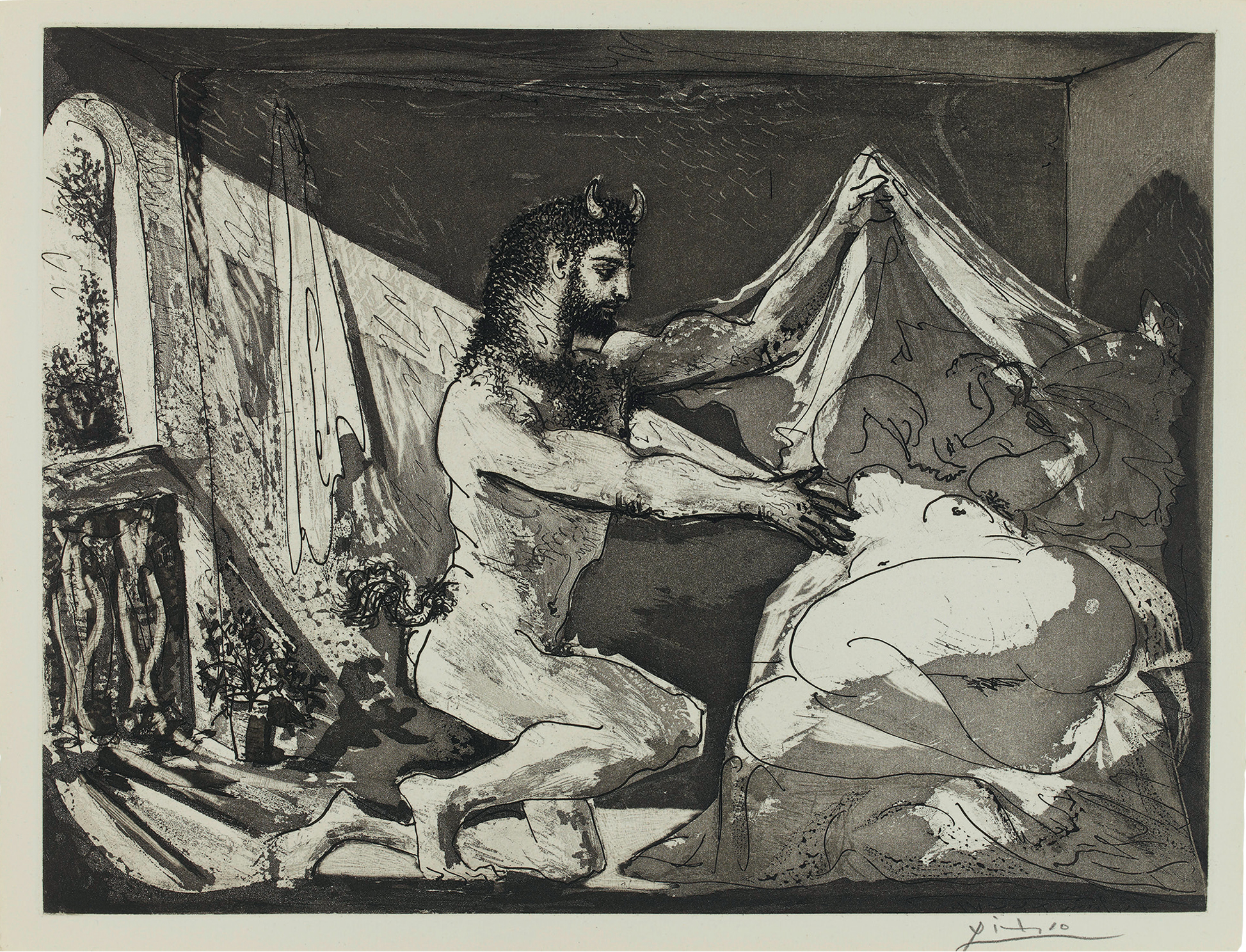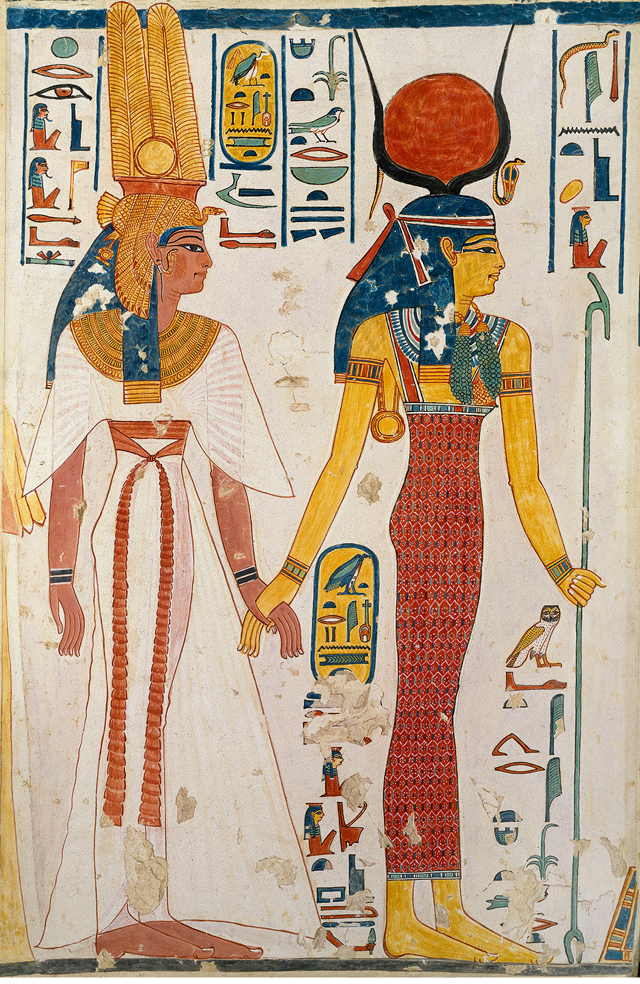My favourite painting: Norman Ackroyd
Norman Ackroyd chooses his favourite painting for Country Life.


Faun Revealing a Sleeping Woman, 1933, by Pablo Picasso (1881 –1973), 12½ in by 16½ in, ‘The Vollard Suite’ (edition 230 full sets)
Norman Ackroyd says: Picasso was 50 in 1931, when he embarked on an intense six years of etching production. This resulted in the famous “Vollard Suite” as well as the 36 etchings of animals for Buffon’s Histoire Naturelle. With the help of his brilliant technician, Roger Lacourière, he redefined the artform. He broke rules and took pure etching into new freedoms and new directions. This plate, for me, is one of the great etchings of the 20th century. It is electric with Picasso’s energy, yet also imbued with a wonderful tenderness.
Norman Ackroyd RA is an artist and printmaker. He has overseen the hanging of the print room at this year’s Royal Academy Summer Exhibition (until August 16)
John McEwen comments: Picasso’s acute sense of mortality made him terrified of dying. His 50th birthday in 1931 was a particularly doom-laden milestone and goaded him to renewed invention, enforced, as always, by a new lover — in this case, the schoolgirl Marie-Thérèse Walter. Initial illegality made the affair all the more energising.
In addition to painting and sculpting, he undertook a major print-making assignment, a suite of 100 etchings commissioned by his first Paris dealer, Ambroise Vollard. Vollard demanded a contribution towards the cost and received a Cézanne and a Renoir. Most of the etchings were made in spring 1933, but it took until 1937 to finish the project, and two further years for the master printmaker Roger Lacourière to complete printing the edition.
Picasso’s love of improvisation was in tune with his time, not least the great American innovation of jazz. Art comes from art. Once he had created his own visual language, he took it in every challenging direction he could, as Norman Ackroyd says, continuing to steal from the past as freely as from his contemporaries.
Improvisation is the essence of ‘The Vollard Suite’, which is a series of spontaneous images. Each etching is inscribed with the year, month and day, the whole amounting to a visual journal of Picasso’s innermost thoughts in the 1930s. Half the etchings are on the theme of the sculptor’s studio and the early ones, such as this Rembrandt-indebted moonlit fantasy of a faun (symbolic of lust) and a naked woman, revel in eroticism.
Sign up for the Country Life Newsletter
Exquisite houses, the beauty of Nature, and how to get the most from your life, straight to your inbox.
This article was originally published in Country Life, July 15 2015
More from the My Favourite Painting series

My favourite painting: Pierre Emmanuel Taittinger
Pierre Emmanuel Taittinger chooses his favourite painting for Country Life.
Country Life is unlike any other magazine: the only glossy weekly on the newsstand and the only magazine that has been guest-edited by HRH The King not once, but twice. It is a celebration of modern rural life and all its diverse joys and pleasures — that was first published in Queen Victoria's Diamond Jubilee year. Our eclectic mixture of witty and informative content — from the most up-to-date property news and commentary and a coveted glimpse inside some of the UK's best houses and gardens, to gardening, the arts and interior design, written by experts in their field — still cannot be found in print or online, anywhere else.
-
 Hidden excellence in a £7.5 million north London home
Hidden excellence in a £7.5 million north London homeBehind the traditional façades of Provost Road, you will find something very special.
By James Fisher
-
 RHS Chelsea Flower Show: Everything you need to know, plus our top tips and tricks
RHS Chelsea Flower Show: Everything you need to know, plus our top tips and tricksCountry Life editors and contributor share their tips and tricks for making the most of Chelsea.
By Amie Elizabeth White
-
 My favourite painting: Allan Mallinson
My favourite painting: Allan MallinsonMilitary historian Allan Mallinson picks an image of 'faith, generosity and ultimate sacrifice'.
By Charlotte Mullins
-
 My Favourite Painting: Piet Oudolf
My Favourite Painting: Piet Oudolf'One cannot sense whether he is far out on the ocean or closer to shore, or what he may be watching or feeling in that moment as he stares towards the beach.’
By Country Life
-
 My Favourite Painting: Mary Plazas
My Favourite Painting: Mary Plazas'There is compassion, awe, humility, a knowing yet a questioning in the glistening eyes. It moves me, it inspires me beyond the need to know.’
By Country Life
-
 My favourite painting: Robert Kime
My favourite painting: Robert KimeRobert Kime shares his fondness for New Year Snow by Ravilious
By Country Life
-
 My Favourite Painting: Anna Pavord
My Favourite Painting: Anna PavordAnna Pavord chooses a picture which reminds her of where she grew up
By Country Life
-
 My favourite painting: The Duchess of Wellington
My favourite painting: The Duchess of WellingtonThe Duchess of Wellington chooses her favourite painting for Country Life.
By Country Life
-
 My favourite painting: Maureen Lipman
My favourite painting: Maureen LipmanMaureen Lipman chooses her favourite painting for Country Life.
By Country Life
-
 My favourite painting: Jacqueline Wilson
My favourite painting: Jacqueline Wilson'I looked at this painting and decided to write about a Victorian circus girl one day'
By Country Life